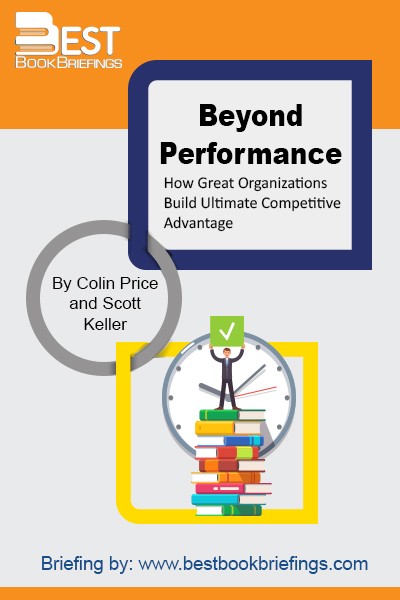Beyond Performance
How Great Organizations Build Ultimate Competitive Advantage
Editorial Review
Transformations that ignore health and focus only on performance are 1.5 times more likely to fail in the long run. The good news here is that research and experience both tell us that performance and health are not in conflict, but are complementary. To see why, consider a sports team that is focusing single-mindedly on its performance. If all it thinks about is winning games and titles this season, it will have a rude awakening in years to come. It will have failed to recruit new members, develop the bench, secure stakeholder support, obtain financial backing, build community relationships, and so on. On the other hand, if the team takes steps to improve its health, it will improve its performance as well. Recruiting promising new members will help it perform better in the future. In turn, performing better will make it easier to recruit new members and secure financial backing. A team that performs well this year is a product of superior financing, recruitment, and training in the past. In this way, paying attention to performance and health creates a virtuous cycle of sustained excellence over time. Both performance and health require action today, even though returns on investments in health may not materialize for many years.
Book Reviews
Books on Related Topics

Even if you’re smart, dedicated, and have a stellar work ethic, you have gaps in your supervisory skills. You make mistakes that could hurt employees, your company, and your own career. You may get some limited training, depending on your organization. You might find mentors to guide you. You might invest

In this book, the author illustrates using real life experiences how a firm should analyze the competition and position itself in such a way that it pulls a fair share of the market. In the book, the author covers the need for a firm to establish a value chain and add

The true nature of management is humanity. Unfortunately, the idea of the humanity of management is not yet widely understood. We all used to consider management as a kind of technology based on scientific observation, tended by experts and transferable to students. This idea has its roots firmly planted in the American

If you are a boss who wants to do great work, what can you do about it? Good Boss, Bad Boss is devoted to answering that question. Stanford Professor Robert Sutton weaves together the best psychological and management research with compelling stories and cases to reveal the mindset and moves of the best

There is a competitive advantage out there, arguably more powerful than any other. Is it superior strategy? Faster innovation? Smarter employees? No, New York Times best-selling author, Patrick Lencioni, argues that the seminal difference between successful companies and mediocre ones has little to do with what they know and how smart

The Levity Effect is no laughing matter. It is a serious work of notification about the powerful influence of laughter and lightness on organizational performance and personal health. It proves the theory that you can work hard, reach impressive goals, and still have fun doing it. It is really a humorous,



